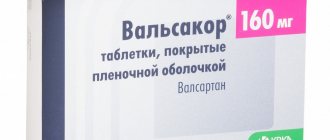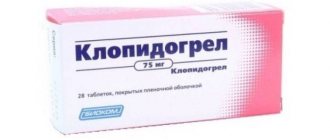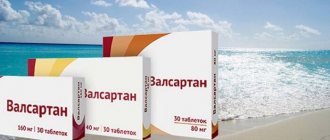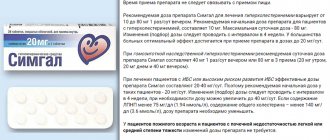Write a review
Reviews: 0
Manufacturers: Gedeon Richter-RUS
Active ingredients
- Desloratadine
Disease class
- Vasomotor and allergic rhinitis
- Idiopathic urticaria
Clinical and pharmacological group
- Not indicated. See instructions
Pharmacological action
- Antipruritic
- Antiallergic
- Antihistamine
Pharmacological group
- H1-antihistamines
Directions for use and doses
Inside.
For adults and adolescents aged 12 years and older, the drug is prescribed once a day at a dose of 5 mg (1 tablet). It is recommended to take the drug at the same time of day, regardless of meals, with a small amount of water. The tablet should be swallowed whole without chewing.
For chronic renal failure and liver failure, adjustment of the dosage regimen is required: an initial dose of 5 mg is recommended to be taken every other day (according to pharmacokinetics data). Recommendations for dosing in children with chronic renal failure and liver failure are not available due to insufficient data.
Lordestin oral tablets
Instructions for medical use of the drug
Description of pharmacological action
Histamine H1 receptor blocker. It is the primary active metabolite of loratadine. Suppresses the release of histamine and leukotriene C4 from mast cells. Prevents the development and facilitates the course of allergic reactions. It has antiallergic, antipruritic and antiexudative effects. Reduces capillary permeability, prevents the development of tissue edema. It has virtually no sedative effect and, when taken in therapeutic doses, does not affect the speed of psychomotor reactions.
Indications for use
- seasonal allergic rhinitis (to relieve the following symptoms: sneezing, rhinorrhea, itching, nasal congestion; itching in the eyes, lacrimation, redness of the eyes; itching in the palate, cough); - chronic idiopathic urticaria (skin itching and rash).
Release form
film-coated tablets 5 mg; contour packaging 10 cardboard pack 1; film-coated tablets 5 mg; contour packaging 10 cardboard pack 3;
Pharmacodynamics
Histamine H1 receptor blocker. It is the primary active metabolite of loratadine. Suppresses the release of histamine and leukotriene C4 from mast cells. Prevents the development and facilitates the course of allergic reactions. It has antiallergic, antipruritic and antiexudative effects. Reduces capillary permeability, prevents the development of tissue edema. It has virtually no sedative effect and, when taken in therapeutic doses, does not affect the speed of psychomotor reactions.
Pharmacokinetics
Absorption After taking the drug orally, desloratadine is well absorbed from the gastrointestinal tract, and detectable concentrations of desloratadine in the blood plasma are achieved within 30 minutes. After a single dose of 5 mg or 7.5 mg, Cmax is achieved in approximately 3 hours (2-6 hours). The bioavailability of desloratadine is dose proportional (dose range 5-20 mg). Distribution The binding of desloratadine to plasma proteins is 83-87%, and 3-hydroxydesloratadine is 85-89%. When used in a dose of 5 mg to 20 mg 1 time / day for 14 days, no signs of clinically significant accumulation of desloratadine were detected. Simultaneous food intake or simultaneous consumption of grapefruit juice does not affect the bioavailability and distribution of desloratadine (when taken at a dose of 7.5 mg 1 time / day). Does not penetrate the BBB. Metabolism and excretion Extensively metabolized in the liver to 3-hydroxydesloratodine, which is then glucuronidated. The main route of metabolism of desloratadine is hydroxylation. It is not an inhibitor of CYP3A4 and CYP2D6 isoenzymes and is not a substrate or inhibitor of P-glycoprotein. Desloratadine is excreted from the body in the form of a glucuronide compound and in small amounts unchanged (by the kidneys - less than 2% and through the intestines - less than 7%). T1/2 for both desloratadine and 3-hydroxydesloratadine is 20-30 hours (average 27 hours). Pharmacokinetics in special clinical situations In chronic renal failure, Cmax and AUC of desloratadine increase from 1.2 to 1.7 times and from 1.9 to 2.5 times, respectively (compared to data in healthy volunteers). The concentration of 3-hydroxydesloratodine changes slightly. The binding of desloratadine and 3-hydroxydesloratodine to plasma proteins does not change in chronic renal failure. Desloratadine and 3-hydroxydesloratadine are poorly excreted by hemodialysis. In patients with liver failure, AUC increases 2.4 times compared to data in healthy volunteers. The overall oral clearance of desloratadine in patients with mild, moderate and severe hepatic impairment is 37%, 36% and 28%, respectively (compared with data in healthy volunteers). There is an increase in T1/2 of desloratadine in patients with liver failure. The Cmax and AUC of 3-hydroxydesloratodine in patients with hepatic impairment do not differ from those in healthy subjects with normal liver function.
Use during pregnancy
The drug is contraindicated during pregnancy. Since desloratadine is excreted in breast milk, the use of the drug during lactation (breastfeeding) is contraindicated.
Contraindications for use
- pregnancy; - lactation period; - children under 12 years of age; - hypersensitivity to the components of the drug. The drug should be prescribed with caution in severe renal failure.
Side effects
The most common side effects: fatigue (1.2%), dry mouth (8%), headache (0.6%). Side effects according to post-marketing studies. From the central nervous system: dizziness, hallucinations, psychomotor hyperreactivity, insomnia, drowsiness. From the cardiovascular system: tachycardia, palpitations. From the digestive system: abdominal pain, dyspepsia (including nausea, vomiting, diarrhea), hyperbilirubinemia, increased activity of liver enzymes, hepatitis. Allergic reactions: skin rash, itching, urticaria, angioedema, anaphylactic shock. Other: dysmenorrhea, increased fatigue, myalgia.
Directions for use and doses
Inside. For adults and adolescents aged 12 years and older, the drug is prescribed in a dose of 5 mg (1 tablet) 1 time/day. It is recommended to take the drug at the same time of day, regardless of meals, with a small amount of water. The tablet should be swallowed whole without chewing. In case of chronic renal and liver failure, adjustment of the dosage regimen is required: an initial dose of 5 mg is recommended to be taken every other day (according to pharmacokinetics data). Dosing recommendations for children with chronic renal and hepatic insufficiency are not available due to insufficient data.
Overdose
In case of overdose, drowsiness is noted. Treatment: gastric lavage, activated carbon, symptomatic therapy. The drug is not eliminated by hemodialysis. The effectiveness of peritoneal dialysis has not been established.
Interactions with other drugs
When used together with ketoconazole, erythromycin, azithromycin, fluoxetine and cimetidine, no clinically significant changes in plasma concentrations of desloratadine were detected. Lordestin does not enhance the inhibitory effect of ethanol on psychomotor function.
Special instructions for use
Effect on the ability to drive vehicles and operate machinery There was no effect of Lordestin when used in recommended doses on the ability to drive vehicles and operate machinery. However, given that patients may experience drowsiness, caution is recommended if central nervous system side effects occur.
Storage conditions
At a temperature not exceeding 30 °C.
Best before date
24 months
ATX classification:
R Respiratory system
R06 Antihistamines for systemic use
R06AX Other antihistamines for systemic use
R06AX27 Desloratadine
Side effect
The most common side effects: 1.2% - fatigue, 8% - dry mouth, 0.6% - headache.
Side effects according to post-marketing studies: dizziness, tachycardia, palpitations, abdominal pain, dyspepsia (including nausea, vomiting, diarrhea), hyperbilirubinemia, increased activity of liver enzymes, hepatitis, allergic reactions (skin rash, itching, urticaria, angioedema, anaphylactic shock), dysmenorrhea, fatigue, myalgia, hallucinations, psychomotor hyperreactivity, insomnia, drowsiness.
Pharmacological properties of Lordestin
Lordestin is an effective drug aimed at the comprehensive treatment of seasonal allergies.
The drug reaches maximum concentration in the body within 30-40 minutes, and the binding to proteins is 80-84%. Lordestin is excreted from the body in urine within 25-27 hours.
Lordestin has good reviews as a medicine for relieving symptoms of chronic rhinitis.
Lordestin does not have a sedative effect and does not inhibit the central nervous system. The active ingredients of the drug block histamine receptors and suppress cytokines.
The drug has a long-term therapeutic effect, suppressing the release of histamine from mast cells and preventing the development of allergic reactions. Lordestin tablets reduce capillary permeability, relieve tissue swelling and muscle spasms.
Indications for use
The list of indications for use of the drug can be presented as follows:
- allergic seasonal rhinitis;
- sneeze;
- rhinorrhea;
- nasal congestion;
- itching in the eyes;
- lacrimation;
- redness of the eyes;
- cough;
- skin itching and rash.
for adults
Patients of this age group can use a similar remedy without significant restrictions in doses, depending on age. The drug is well tolerated and eliminated from the body in a timely manner, which makes it possible to use it in patients with impaired liver and kidney function. The composition can be prescribed to elderly people. The drug should not be used if adverse reactions occur. Before starting treatment, you must familiarize yourself with the contraindications.
for children
The drug can be used in pediatric practice as prescribed by a doctor. Young children are recommended to use the drug in syrup form. The composition in solid form is prohibited for use by persons under the age of 12 years.
for pregnant women and during lactation
Use during pregnancy is somewhat limited. The use of the composition is possible only as prescribed by a doctor. The active substance of the drug does not penetrate the placental barrier, but studies of its mechanism of action have not yet been carried out. Use during lactation is possible after stopping breastfeeding.
Overdose
Taking dosages five times higher than recommended is not dangerous for a healthy person. There are no clinical reactions in this case. In laboratory studies conducted on a group of adults regularly taking 20 mg of the drug for 14 days, it was not accompanied by a clinical reaction. There are also no significant disturbances in the functioning of the cardiovascular system during this period. The use of the active substance at a dose of 45 mg per day for 10 days also does not lead to disturbances and does not provoke an extension of the half-life.
When using the composition in doses 5 and 9 times higher than recommended, disturbances in the functioning of the body are not observed. The composition is well tolerated.
In case of severe overdose, symptoms of intoxication may occur. In this case, you should immediately seek medical help. The patient undergoes gastric lavage. We recommend taking enterosorbents.
Storage conditions
The medicine in tablet form should be stored at a temperature of no more than 25 degrees. The drug should be kept away from children. Maximum shelf life is 3 years from the date of production.
Lordestin in the form of syrup is recommended to be stored at a temperature of no more than 20 degrees in a place protected from children. The composition must be stored in its original packaging. The maximum shelf life is 2 years from the production date indicated on the bottle.
The drug Lrdestin belongs to the list of over-the-counter formulations and is released to the public for free sale.
Similar drugs:
- Ergoferon () Lozenges
- Celandine grass (Chelidonii majoris herba) Vegetable raw materials
- L-cet Oral tablets
- Loratadine Syrup
- Peritol Oral tablets
- Loratadine-Teva Oral tablets
- Erespal Oral tablets
- Levocetirizine-Teva Oral tablets
- Aminazine Dragee
- Zyrtec Oral drops
** The Drug Directory is intended for informational purposes only. For more complete information, please refer to the manufacturer's instructions. Do not self-medicate; Before starting to use the drug Lordestin, you should consult a doctor. EUROLAB is not responsible for the consequences caused by the use of information posted on the portal. Any information on the site does not replace medical advice and cannot serve as a guarantee of the positive effect of the drug.
Are you interested in the drug Lordestin? Do you want to know more detailed information or do you need a doctor's examination? Or do you need an inspection? You can make an appointment with a doctor - the Euro lab is always at your service! The best doctors will examine you, advise you, provide the necessary assistance and make a diagnosis. You can also call a doctor at home . Euro lab clinic is open for you around the clock.
** Attention! The information presented in this medication guide is intended for medical professionals and should not be used as a basis for self-medication. The description of the drug Lordestin is provided for informational purposes and is not intended for prescribing treatment without the participation of a doctor. Patients need to consult a specialist!
If you are interested in any other drugs and medications, their descriptions and instructions for use, information about the composition and form of release, indications for use and side effects, methods of use, prices and reviews of drugs, or you have any other questions and suggestions - write to us, we will definitely try to help you.
Analogs
Lordestin
Lordestin is an antihistamine drug that is highly effective. The drug is produced in two dosage forms. The drug is well tolerated and does not provoke adverse reactions in patients of different age categories. It is actively used in pediatric practice in the format of an oral suspension. The drug has a sufficient number of analogues that are similar in their mechanism of action. The list of such drugs includes the following medications.
Loratodine Loratodine is the most common drug characterized by pronounced antihistamine activity. The advantage of this composition is its good tolerability. The composition can be used in pediatric practice. The mechanism of its effect on a woman’s body and the processes of fetal development during pregnancy has not been studied, so its use should be abandoned. The disadvantage of the drug Loratodine is currently released in one dosage form - tablets.
Erius
The drug Erius is well tolerated. The composition is produced in the form of tablets and syrup intended for oral use. The syrup or suspension has a pleasant taste and a rather mild odor; a similar product can be used in pediatrics. The drug can also be used during pregnancy and breastfeeding; there is currently no data on the negative effects of the drug composition.
Eden
Eden is a popular antihistamine drug that is well tolerated by patients of different age categories. For ease of use, the medicinal composition is produced in the form of tablets and syrup. There are no adverse reactions associated with the use of the drug.
Claritin
The drug Claritin is also an antihistamine, the composition is well tolerated, and adverse reactions when taking the drug are extremely rare. In most cases, the composition is prescribed to patients of a mature age category; children are recommended to take the drug in syrup form.
Suprastin
The drug has a pronounced effect. The composition helps eliminate even severe symptoms of allergic reactions. Despite this activity, it is well tolerated, and adverse reactions are extremely rare. The composition is available only in the form of tablets, but also in the form of an ointment for external use. This form of release makes it possible to accelerate the healing process in case of extensive rashes.
Description and composition
The drug is produced in the form of syrup and tablets intended for oral administration.
The active ingredient of the drugs, regardless of the dosage form, is desloratadine.
The list of excipients included in the syrup can be presented as follows:
- sorbitol;
- propylene glycol;
- lemon acid;
- sodium citrate;
- sodium cyclomact;
- hypromellose;
- disodium edetad hydrate;
- almond flavor;
- water.
The syrup has a transparent color and uniform structure. The listed auxiliary components provide the required dosage form.
The drug is also produced in the form of film-coated tablets. The active substance remains unchanged. The tablets have a round, biconvex shape, white or almost white at the break.
The list of auxiliary components present in the composition can be presented as follows:
- microcrystalline cellulose;
- calcium hydrogen phosphate dihydrate;
- gelatinized starch;
- colloidal silicon dioxide;
- Magnesium stearate.
The film shell contains the following elements:
- yellow opadry;
- titanium dioxide;
- talc;
- soy lecithin;
- aluminum varnish;
- xanthan gum.









